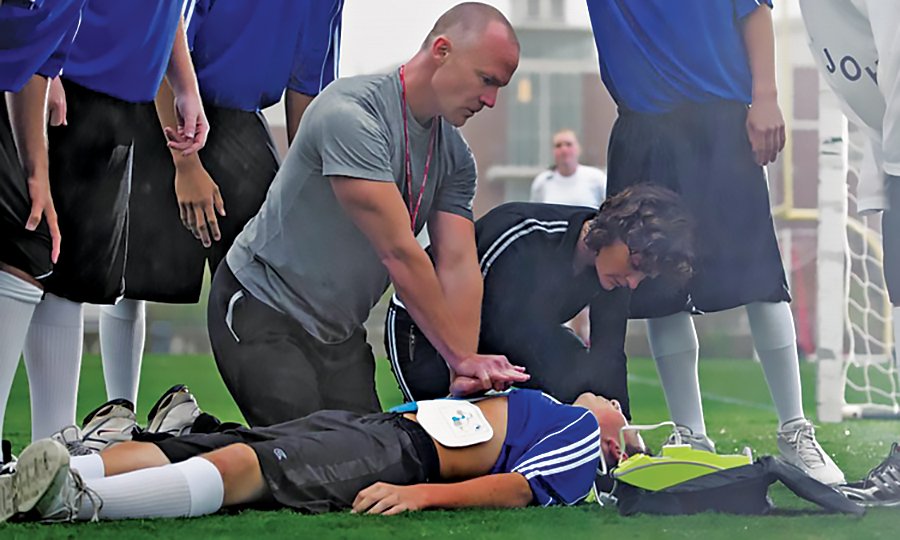Sudden Cardiac Arrest
Prepare coaches and parents to respond to medical emergencies
By John Engh
Photo: NAYS
Fewer than 48 hours into the New Year, fans watching the final Monday Night Football game of the season between Cincinnati and Buffalo saw a chilling scene when the Bills’ Damar Hamlin collapsed on the field and medical personnel rushed to tend to him.
It was frightening footage, watched and re-watched over the following days, as the young man’s life was in peril.
And it should be a strong reminder for anyone involved in youth sports that a cardiac arrest can strike any athlete at any time.
Fast-acting medical personnel administered CPR on the field before transporting Hamlin to a hospital, but imagine this scenario occurring during a mid-week practice or Saturday-morning game in your community.
Who is trained and capable of rushing to perform CPR or use an AED while emergency responders are on the way?
Take Time To Train
When I first began working at the National Alliance for Youth Sports (NAYS), part of my job was to help organize a Youth Sports Safety Summit. I will never forget the presentation by a mother and father whose 11-year-old son had died when a baseball hit his chest, causing cardiac arrest.
At that time, I never knew that type of injury was even possible. This phenomenon is called “commotio cordis” or “agitation to the heart,” and while rare, there are 10 to 20 cases in children each year. That tragedy affected me as a coach when my own son reached coach-pitch age in baseball, and the injury on Monday Night Football brought it all back.
Several years ago, NAYS partnered with Simon’s Heart to provide Sudden Cardiac Arrest Training. It’s available online and free. And it takes less time to complete than watching your favorite Netflix show.
“Sudden cardiac arrest is the leading cause of death of student-athletes in this country,” says Darren Sudman, founder of Simon’s Heart, a nonprofit organization that raises awareness about conditions that can lead to sudden cardiac arrest and death in children.
From the comfort of home, coaches, parents, and youth-sports administrators can learn of the warning signs and symptoms of sudden cardiac arrest and how to handle a medical emergency if an athlete collapses. Every second matters.
Strength In Numbers
“Understand, that for each minute that passes in a cardiac event, the chance of survival decreases by 10 percent,” says Stacy Carone, Associate Athletics Director for Sports Medicine at the University of Maryland-Baltimore County. “So, making a very quick decision can be the difference between life and death in a cardiac situation.”
A 2022 American Heart Association report revealed that sudden cardiac arrest remains a public-health crisis. Other studies show approximately 3,000 people under the age of 25 die from sudden cardiac arrest each year, and roughly 40 percent of those deaths occur in a sports-related setting. The numbers are grim.
Perhaps a whole lot of good can come from Hamlin’s scary situation and the other incidents that happen on fields, courts, and rinks around the country.
The more people in youth-sports programs who are trained in CPR and have the knowledge and confidence to respond in an emergency, the better protected our young athletes will be.
John Engh is executive director of the National Alliance for Youth Sports (NAYS) in West Palm Beach, Fla. He can be reached via email at jengh@nays.org. To join more than 3,000 communities by starting a NAYS Member Organization, visit www.nays.org, email nays@nays.org or call (800) 729-2057.

